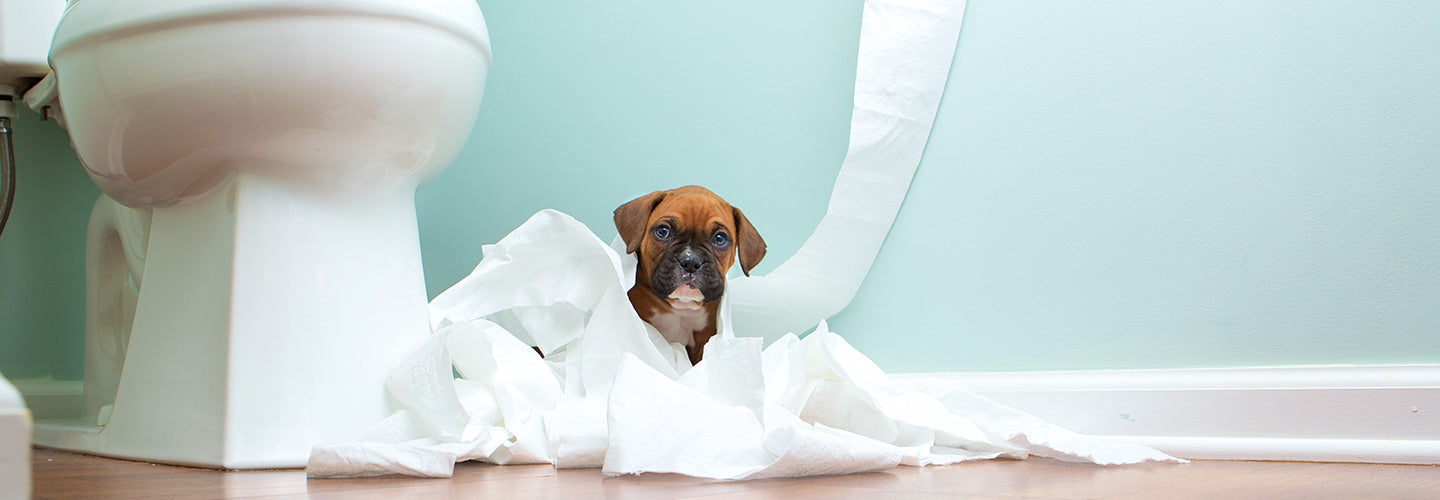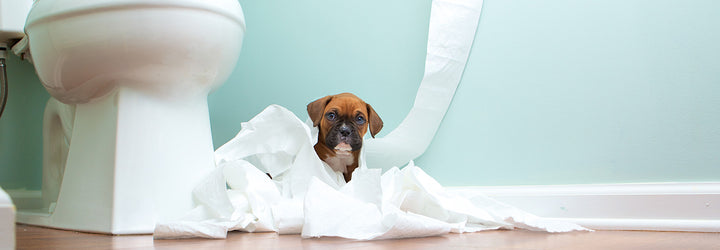

Posted by Marketing Team, on
How to Make Moving Home Less Stressful for Pets
Moving house can be a stressful time for humans! The packing, planning and sense of the unknown brings on extra stresses and we know that our pets can sense this. When it comes to packing up your home, the changes your pets can see can be confusing for them too! Changing their environment before you even move home can put them on edge and they can become more anxious or excitable than usual.
Your pet's life is based around routines and familiarity, with territory and scent being a huge part of them feeling comfortable and stable, disruption of any sort can be difficult for them.
Carefully planning your pet's move will really help them to make the move to their new home as smoothly as possible, with less stress for you and them. So here at Pets & Friends, we’ve put together some top tips on how to transition your pet to your new home as smoothly as possible.

Important things to consider BEFORE the big move with your pets:
Cats are very sensitive animals, and often struggle more with a move than any other pet in the family. Cats produce a pheromone when they feel happy and secure in their home, marking their familiar environment by rubbing their faces up against items around the house. When beginning the moving process, investing in anti-anxiety and pheromone diffusers can help your cat adjust more easily, keeping them calm and helping them to feel safe as their environment changes.
The same goes for dogs too, anti-anxiety products can help with unfamiliarity as you rearrange their surroundings. Anti-chew sprays are also a good option for dogs who may be super excited to be in their new house!
Keep your routine.
Your pet is used to their routine as much as possible, this may not be totally fixed but your pet will know when its dinner time, bedtime and playtime or time for cuddles. This will give you pet a sense of security and control in their home environment so try and stick to it and act normal!
Make a safe zone
This again applies mainly to cats as they will suffer with change more than dogs who are quite resilient really. Slowly moving your cat's food, water, litter tray, favourite bed or blanket into a quiet room like a spare bedroom can create a little safe place for your cat.
It's also a great opportunity to introduce them to their cat carrier which they may be fearful of as it usually means a trip to the dreaded VET. Try putting their favourite bed in there, some tasty treats, to help your cat feel more positive about the cat carrier, you can also use a pheromone spray to make the box seem more like home. Try and do all this at least a week before the big move.
Ensure your cats are securely in this room at least 24 hours before the moving date to avoid them going missing on the morning, even further in advance if you have an outdoors loving cat. This also saves you having to keep an eye on them and gives them a safe space to relax.
Register with a local vet.
Just before your move to a new house you should register your pet with a new local vet. When the move is complete this could easily slip to the back of your mind, so try and do it in advance - just in case there are any accidents or emergencies.
Change microchip details.
We cannot stress how important it is to update your pets microchip details with your new address and contact telephone numbers are all correct. Naturally with lots of open doors as you move in boxes, and all the disruption of moving day, it can be easy for your pet to get outside and get lost. You should update your pets microchip details on the day that you move. Also, be sure to get a new engraved tag for your dog or cat with your new address/phone number changes on.
Make a plan for the BIG move day.
You may want to consider asking a friend, neighbour or relative to look after your pets for the day while you move, which has the advantage of keeping your pets safe and limiting any stress to all those involved.
What to do on the day of the big move with your pets:
Use your safe zone.
Ensure your pets are in their safe zone/room (see above), also ensure that everyone who is helping you moves knows not to enter that room - to avoid any pets going missing. Always pack your pets things last, so they don't feel their possessions are being taken away from them, which will be covered in their scent.
Travelling to your new home with your pet
Travel with your pets as you would normally - if you have a cat they will need a safe, enclosed carrier, and should never be free within the car environment. Dogs can travel in crates, or in a travel-safe harness. Depending on how far away you are moving ensure that your pet is reassured throughout the car journey, ensure they have regular access to water. Never leave your pet in a car, even in the shade. If your pet is prone to travel sickness, try to withhold food for several hours before the journey.

Make a new pet safe zone in your new house.
Unpack your pets food, water, favourite bed, and toys first while they are still secure in their carrier or on a lead. It will be really reassuring for your cat to see and smell their home items, and help them settle in. These should all be placed in one safe quite room of your new home that can be closed off. Leaving your pet to explore this environment quietly, sitting with them to give them encouragement maybe get their favourite toys out with after a while to play with.
Scent transition
Your cats scent is critical for making them feel happy and secure in their environment, ensure you bring their blankets and bedding to your new home as these will help your cat to settle in. One of the best things you can do is rub a soft cloth around your cat's face, and then wipe it onto furnishings and corners at cat-height, anywhere that you cat might naturally rub up against this will help to spread their scent around your new house. Continue to use a pheromone spray in your new home to help your cat settle in. The same above applies for dogs in many ways, their bedding, blankets, and toys will all smell familiar and like home and will help your dog to settle into their new home.
After moving in
Going outside
Outdoor cats will miss having outside access, but it is important to be strict - many cats have been lost by being let out too soon and getting disorientated or trying to head back to their previous territory. Cats should remain indoors in your new house for at least four weeks. This time allows them to accept that their new house as being 'home', scent-mark the area and settle in and back to their normal self.
A common tactic to help ensure your cat returns to your new home is to let them out while they are hungry or waiting to be fed - this makes it much more likely they will follow you back indoors to the sound of a rattling packet of biscuits! Most importantly, don't force them outside - leave the door open and go outside yourself, encouraging them to follow if. If they don't want to, try again another day. Start small with short trips and build up as your cat gets more confident with their surroundings, until you are happy, they can come and go as they please. You could also try using a cat harness to introduce your cat to their new garden or street, it doesn't matter how crazy you look walking a cat on a lead what matters is they are safe and learning about their new garden and location.
Allow for accidents.
A new home is stressful, and the odd toilet accident is to be expected as they get used to their new environment and routine, especially if they are used to using the neighbours flower borders as a toilet. It’s important to be patient with your pet, show your cats where their litter tray is now located & ensure you have enough in the house (we recommend one tray for every cat plus an extra).

Room to explore.
Having access to a lot of new space all at once can be very stressful for your dog or cat. Access to the new home should be done slowly, for cats ensure that all windows are closed - no matter what the cat tells you they are not allowed outside yet! Accompany your dog or cat during this initial exploration, so that your pet is not overwhelmed giving them lots of reassurance and praise.
If you are dog owner hopefully you will have familiarised yourself before your move with the new areas around your new home where you can go for walks, if not get exploring! During the first few weeks at your new house, keep your dog on a lead when going out for walks and, as soon as they and you build up confidence, you can let them off the lead in safe places.
Have fun in their new environment.
Have fun with your pet in their new home, grooming them, playing with their favourite toys will help your pet to settle in and feel relaxed. What you are trying to achieve is to get your pet to associate pleasurable experiences with new surroundings.
Stopping your pet from returning to your old house
If your new home is only a few miles away from your old home then you may have problems with your pet trying to return, this is much more common in cats than dogs, as they may encounter familiar routes which might lead them back to their old home especially if they are cats who like to roam. If you are moving nearby then try to let the new occupiers know that your cat may return and ask them to call you so that you can come and pick them up. Keeping your cats inside your new home for a long as possible can limit this behaviour.
